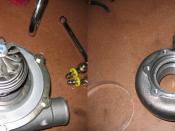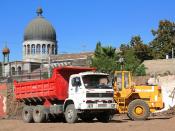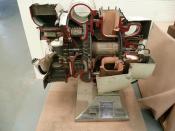A turbocharger is used on many cars to produce more horsepower. A turbocharger is a turbine that compresses air and forces it into the compression chamber. The amount of pressure is measured is PSI. When the piston is on the exhaust stroke it forces the air out of the cylinder and into the exhaust system. The turbo on the exhaust is connected to the turbo on the intake manifold by a shaft. The exhaust gasses spin the exhaust turbo which then makes the intake turbo spin and create pressure. This process is called "spooling". When one lets off the gas there is usually a nice amount of pressure still in the manifolds. All of this pressure has to go somewhere so there are waste gates on each manifold to relieve the pressure. However when you push the gas pedal the pressure created by the turbo has to be built back up.
This lack of pressure is known as turbo lag.
Superchargers work in the same theory with the exception that they are driven by a belt connected to the crankshaft. Using this theory will eliminate turbo lag because the exhaust gases do not have to build up the pressure to spin the turbine. The only bad thing about a supercharger is the fact that they cannot push as many PSI into the combustion chamber as a turbocharger can. A twin turbo system uses two turbochargers. The smaller turbine spools sooner than the larger turbine, therefore reducing the amount of turbo lag.
Using the twin turbo theory, I believe there is a way to eliminate turbo lag. If you replaced the smaller turbocharger with a supercharger there would be instantaneous pressure. The supercharger is always forcing air into the cylinders as long as the crankshaft is turning. The smaller...


